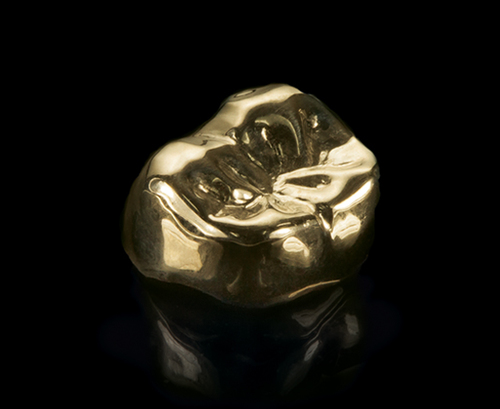Full Metal
Gold has long been a preferred choice for clinicians because of its longevity and functional success. With precious, semi-precious, and non-precious metal options, gold remains a proven material choice for a broad spectrum of clinical needs.
Full gold crowns (FGCs) consist entirely of a single piece of alloy. Although commonly cited as a "gold" crown, this category of crown is composed of many different types of metal elements, including but not limited to gold, platinum, palladium, silver, copper, and tin. The first four elements listed are noble metals, while the last two listed are base metals. Full gold crowns are of better quality when they are high in noble make-up. According to the American Dental Association, full gold crown alloys can only be labeled as high noble when they contain at least 60% noble metal, of which at least 40% must be gold.
In addition to being noncorrosive and hypoallergenic, gold is the most nontoxic and biocompatible metal used in dentistry. Gold margins do not break or chip, even with polish and wear. Gold's wear rates and coefficient of thermal expansion are similar to enamel, which accomplishes a better natural fit. Often, less tooth structure is removed when preparing teeth for gold, leaving the tooth stronger and healthier overall.
-
Functional success
Exceptional fit
Strength
Durability
-
Conventional cementation
-
Anterior: crowns and bridges
Posterior: crowns, bridges, and inlays/onlays


